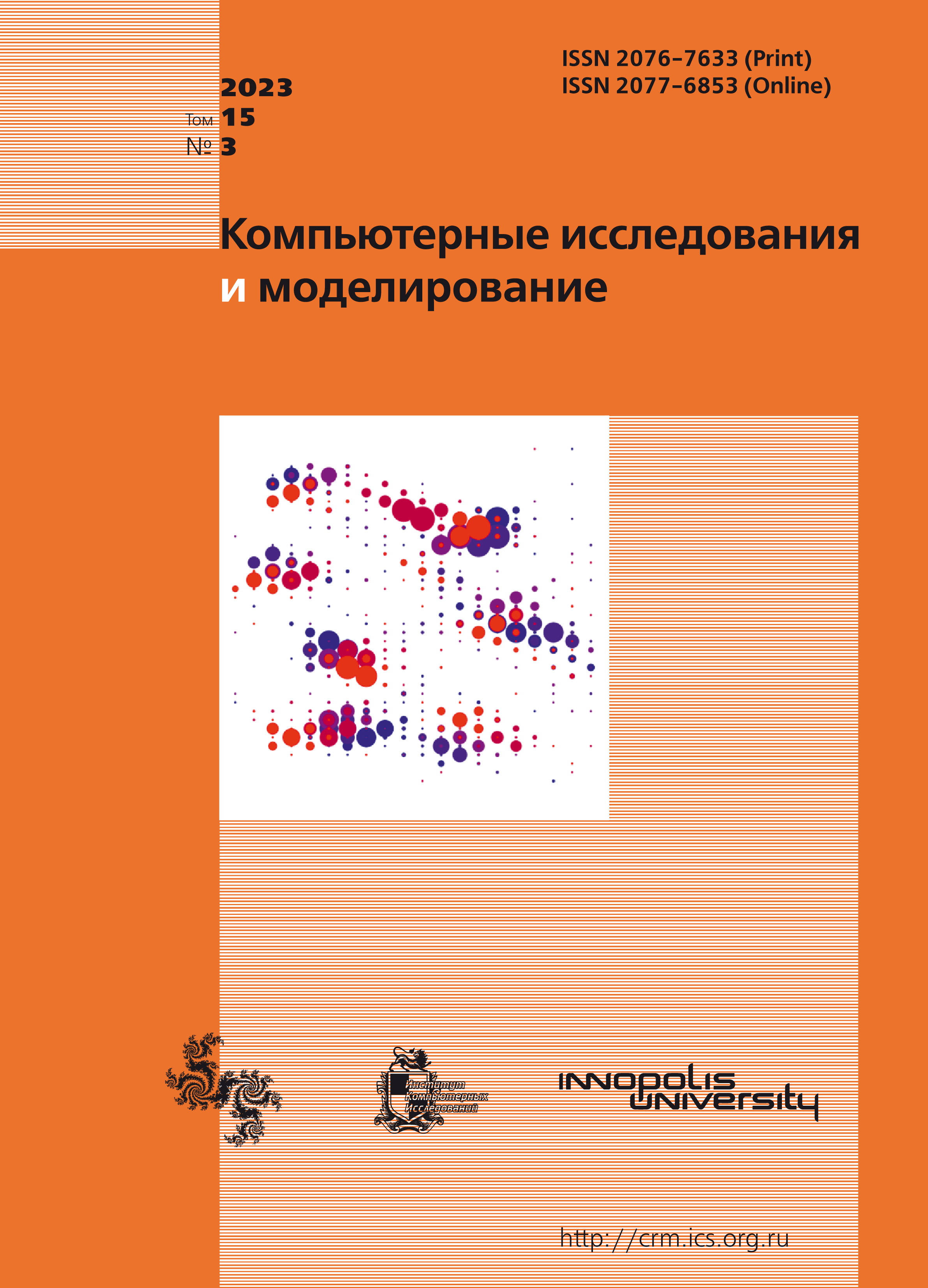All issues
- 2025 Vol. 17
- 2024 Vol. 16
- 2023 Vol. 15
- 2022 Vol. 14
- 2021 Vol. 13
- 2020 Vol. 12
- 2019 Vol. 11
- 2018 Vol. 10
- 2017 Vol. 9
- 2016 Vol. 8
- 2015 Vol. 7
- 2014 Vol. 6
- 2013 Vol. 5
- 2012 Vol. 4
- 2011 Vol. 3
- 2010 Vol. 2
- 2009 Vol. 1
Stationary states and bifurcations in a one-dimensional active medium of oscillators
 pdf (1650K)
pdf (1650K)
This article presents the results of an analytical and computer study of the collective dynamic properties of a chain of self-oscillating systems (conditionally — oscillators). It is assumed that the couplings of individual elements of the chain are non-reciprocal, unidirectional. More precisely, it is assumed that each element of the chain is under the influence of the previous one, while the reverse reaction is absent (physically insignificant). This is the main feature of the chain. This system can be interpreted as an active discrete medium with unidirectional transfer, in particular, the transfer of a matter. Such chains can represent mathematical models of real systems having a lattice structure that occur in various fields of natural science and technology: physics, chemistry, biology, radio engineering, economics, etc. They can also represent models of technological and computational processes. Nonlinear self-oscillating systems (conditionally, oscillators) with a wide “spectrum” of potentially possible individual self-oscillations, from periodic to chaotic, were chosen as the “elements” of the lattice. This allows one to explore various dynamic modes of the chain from regular to chaotic, changing the parameters of the elements and not changing the nature of the elements themselves. The joint application of qualitative methods of the theory of dynamical systems and qualitative-numerical methods allows one to obtain a clear picture of all possible dynamic regimes of the chain. The conditions for the existence and stability of spatially-homogeneous dynamic regimes (deterministic and chaotic) of the chain are studied. The analytical results are illustrated by a numerical experiment. The dynamical regimes of the chain are studied under perturbations of parameters at its boundary. The possibility of controlling the dynamic regimes of the chain by turning on the necessary perturbation at the boundary is shown. Various cases of the dynamics of chains comprised of inhomogeneous (different in their parameters) elements are considered. The global chaotic synchronization (of all oscillators in the chain) is studied analytically and numerically.
Copyright © 2023 Verichev N.N., Verichev S.N., Erofeev V.I.
Indexed in Scopus
Full-text version of the journal is also available on the web site of the scientific electronic library eLIBRARY.RU
The journal is included in the Russian Science Citation Index
The journal is included in the RSCI
International Interdisciplinary Conference "Mathematics. Computing. Education"






